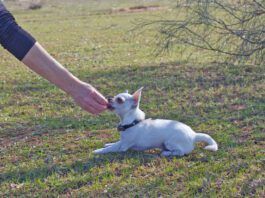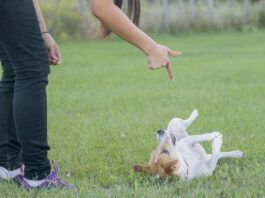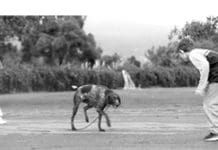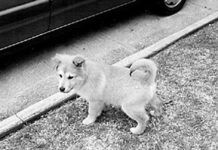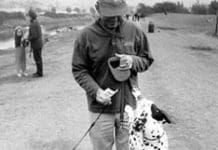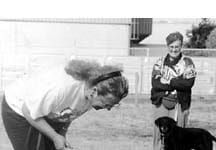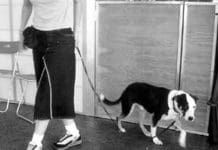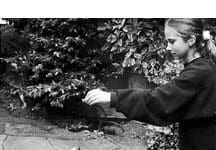Force-Based Training Methods and Some Unintended Consequences
Most people, unwittingly or intentionally, use a lot of physical force when raising and training their dogs. The purposeful ones have a whole variety of reasons. Some may have read about behavioral theories regarding dominance and “the importance of showing the dog who’s boss.” Fans of these theories may advocate imitations of canine behavior such as “scruff shakes” or “Alpha rolls” to convince the dog he’s at the bottom of the family hierarchy. Others may have been influenced by advocates of traditional, military-style training – think of yanking collar ‘corrections’ or using the leash leveraged under their foot to forcibly pull a dog into a Down.
Teaching Your Dog “Off”
When they fill out their evaluation forms at the end of a six-week course, my clients frequently name the Off" exercise as one of the most useful behaviors they have taught their dogs in class. "Off" means "Whatever you are paying attention to right now
Getting Your Children Involved in Training the Family Dog
One of the things that parents almost always say when they decide to add a dog to the family is, It will help teach the kids about responsibility." That's the hope
How to Teach Your Dog to Eliminate on Cue
and will be forced to soil the crate. Once a puppy's inborn instinct to keep his "den" clean is broken
Positively the Best Dog Training Book
handlers are allowed to verbally cue
A Few Enlightening Books on Positive Dog Training
Whether or not they think about it, most people who care for dogs have at least a vague notion of what they consider cruel or humane treatment of a canine companion. Definitions vary wildly, however. Some people have no compunction about smacking or yanking their dogs in an attempt to make them behave as they would like them to. Others may completely eschew the use of physical force on their dogs. The definitions of “cruel” or “humane” treatment tend to reflect an individual’s own experiences and conscience — which may be completely divergent from the societal norm.
How to Stop Lunging Behavior
My nine-month-old Bouvier puppy is in training, but I am having trouble finding a positive way to stop his lunging; he is very strong. I am using a choke chain, and my current trainer feels I'm not firm enough in my corrections. I don't feel comfortable using the choker, but also don't like the idea of the Halti because it might be even more dangerous if he lunged.
A Guide to Choosing the Best Dog Trainer for You AND Your Dog
So, you’ve decided that you and your dog need professional help. Don’t worry; all relationships can use a helping hand at one point or another. Maybe the two of you have communication issues that need to be dealt with (like your dog doesn’t listen and you wish he would!). Or maybe your bouncing bundle of fur is growing faster and bigger than expected, and you’re desperate for a constructive outlet for all that energy and enthusiasm. You’re sure that training is the answer to your problems – and you are probably right!
Classical Conditioning – How Your Dog Learns by Association
we
simply pour on the treats
simply pour on the treats
Training Larger Dogs Using Positive Methods
A holistic pet behavior counselor often has to be like a detective. You have to find all of the missing pieces of the puzzle and put them together to form a complete picture. Sometimes this is not easy because people are not accustomed to thinking about the whole picture in order to determine the cause of their problems. Most of the time, people focus on one detail and cannot see the forest through the trees.
Best Dog Training Approaches
All dog training techniques fit somewhere on a long continuum, from seriously harsh and abusive punishment-based methods at one extreme, to pure positive reinforcement at the other. Neither extreme is likely to be very practical or effective, nor will you find many trainers who recommend using only methods from one end or the other. Most trainers use a combination of techniques that place them somewhere between the two ends of the continuum. Which side of center they are on defines them as primarily compulsion-based trainers or primarily positive ones.
Leading Leashes – Harnesses and Collars for Leash Training
Do you gaze with envy at dogs who walk politely by their owners’ sides, while yours tows you down the sidewalk? Not only is it annoying to have a dog drag you on leash, it can also seriously damage your dog’s trachea and spine. Plus, dogs who strain at their leashes (and who subsequently get jerked by their frustrated handlers) are more likely to have spinal misalignments, and dogs with spinal problems have a much higher incidence of aggressive and/or hyperactive behavior problems.



